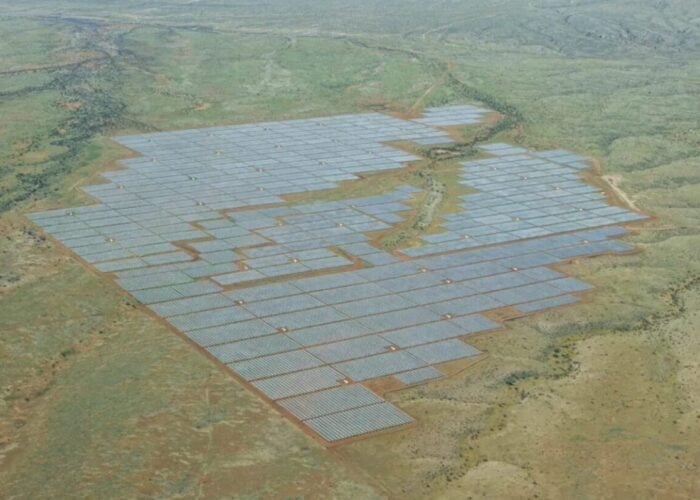Solar PV demand from the UK declined significantly during the third quarter of 2013 (Q3 2013), as the full impact of the Europe-China trade case impacted on module availability. The UK added only 230MW during Q3 2013, dampening any euphoria surrounding the fact that nine-month demand for 2013 from the UK exceeded the gigawatt level for the first time. Over 70% of PV MW demand in Q3 2013 came from the rooftop segment, in comparison to Q1 2013 when ground-mount accounted for over 80%.
This softness in the UK PV market contrasts sharply with the level of activity seen at the project application level, with the large-scale ground-mount sector now having a project pipeline (large-scale projects at application/consent/under-construction phases) approaching the 3GW mark for the first time. Well over 1GW is at site selection and/or initial public hearing status at the village hall level.
Unlock unlimited access for 12 whole months of distinctive global analysis
Photovoltaics International is now included.
- Regular insight and analysis of the industry’s biggest developments
- In-depth interviews with the industry’s leading figures
- Unlimited digital access to the PV Tech Power journal catalogue
- Unlimited digital access to the Photovoltaics International journal catalogue
- Access to more than 1,000 technical papers
- Discounts on Solar Media’s portfolio of events, in-person and virtual
In addition, the anticipation within the domestic industry regarding the draft Solar Strategy document (outlined last week by Greg Barker and DECC at the NEC in Birmingham) is also sustaining long-term optimism that the unofficial 20GW-by-2020 mantra may be finally outlined in detail next year.
Details in the final document – coupled with clarity on contract for difference (CfD) rates and any changes to the large rooftop segment – are still the big issues needed by the UK PV industry to plan with greater confidence. (The documentation from DECC last week was largely a summary of historic comments and press from DECC and Barker over the past year. While not providing the detail most are waiting for, it did nonetheless provide an official audit trail of what DECC has been consistent with in terms of their hopes and plans for the UK PV industry.)
The Lost Quarter
The third quarter of 2013 ended up being the ‘lost’ quarter, something that was largely predicted within the industry and was a direct result of the module supply restrictions that came about following the Europe/China trade case. Module supply into Europe from the leading tier one Chinese c-Si producers is still tight, with 1- week ARO lead-times being cited regularly for large-scale projects in the UK.
The ability of key project developers to manage this situation (while accessing any existing inventory built up in anticipation of supply limitations in the second half of 2013) will be a key factor in the scale of ground-mount projects completed under the 1.6 ROC level ahead of 31 March 2014; not to mention the inevitable weather issues in February and March and having to complete projects with workers stuck in inches of mud.
While tier two suppliers (from non-Chinese country of origin) have been seeing this as an opportunity, the use of many of these suppliers is still not matching with project financing requirements. This is keeping tier two supply in the UK firmly at the rooftop (and mainly small rooftop) segment.
Q1 2014 UK PV demand to hit record high
NPD Solarbuzz is now forecasting overall demand from the UK during October to December 2013 (Q4 2013) at 370MW, with a sharp rise during January to March 2014 (Q1 2014) to a new UK record level of 740MW. Cumulative UK solar PV deployed at 31 March 2014 is projected to reach 4.1GW.
This again indicates that, to satisfy the expectations built up around the 20GW-by-2020 figure, the UK needs to stabilise at the 2.5GW per year figure for a further seven years. Assuming a 1:2 split between rooftop and ground-mount megawatt deployment, this suggests a ground-mount annual demand at the 1.5-1.7GW level, consistent with the percentage of the project pipeline expected to be built out and connected over the next 12-18 months.
However, aside from module supply issues during Q3 2013 and this quarter, supply in Q1 2014 is likely to be a challenge. Here, the Japanese market will provide the greatest distraction, with tier one Chinese module suppliers gaining market share in Japan, seeing the higher module ASPs as a clear advantage, and with Japan set to be the strongest global market in Q1 2014 prior to FiT cuts on 1 April 2014.
This only emphasises the importance of project developers in having multiple (and flexible) module supply arrangements with the key Chinese companies active in the UK (Trina, Renesola, Jinko, Yingli, etc.) to ensure that projects can be successfully interconnected during March 2014. Having multiple brands also assigned at the individual project level may also be key to beating the April deadline.
By the time the final Solar Strategy document is released by DECC (slated for April 2014), the UK solar PV industry will have over 4GW installed. This is likely to present reasons for celebration within DECC, but also won’t be without a potentially larger groundswell of village protestors seeking to protect any intrusion on their local landscapes.
Exactly how the domestic PV community, the trade associations and DECC manage these obstacles and deliver details (not aspirations) on PV policy and deployment out to 2020 will ultimately provide the substance for whether the UK can (or can’t) stabilise at the 2-3 GW per annum level for the next five-plus years or more, and any potential hurdles that the May 2015 election will also create.






